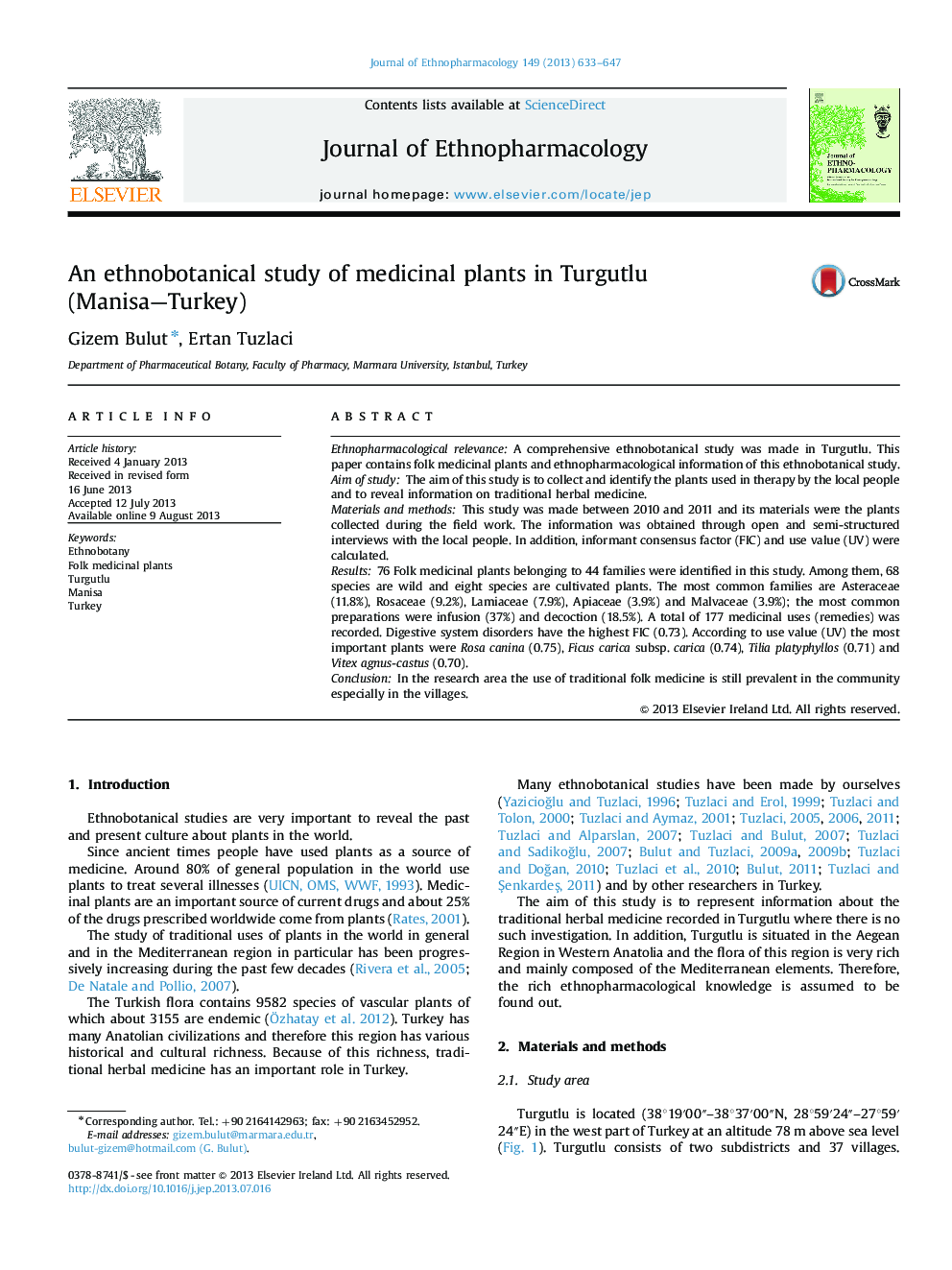| Article ID | Journal | Published Year | Pages | File Type |
|---|---|---|---|---|
| 5836989 | Journal of Ethnopharmacology | 2013 | 15 Pages |
Ethnopharmacological relevanceA comprehensive ethnobotanical study was made in Turgutlu. This paper contains folk medicinal plants and ethnopharmacological information of this ethnobotanical study.Aim of studyThe aim of this study is to collect and identify the plants used in therapy by the local people and to reveal information on traditional herbal medicine.Materials and methodsThis study was made between 2010 and 2011 and its materials were the plants collected during the field work. The information was obtained through open and semi-structured interviews with the local people. In addition, informant consensus factor (FIC) and use value (UV) were calculated.Results76 Folk medicinal plants belonging to 44 families were identified in this study. Among them, 68 species are wild and eight species are cultivated plants. The most common families are Asteraceae (11.8%), Rosaceae (9.2%), Lamiaceae (7.9%), Apiaceae (3.9%) and Malvaceae (3.9%); the most common preparations were infusion (37%) and decoction (18.5%). A total of 177 medicinal uses (remedies) was recorded. Digestive system disorders have the highest FIC (0.73). According to use value (UV) the most important plants were Rosa canina (0.75), Ficus carica subsp. carica (0.74), Tilia platyphyllos (0.71) and Vitex agnus-castus (0.70).ConclusionIn the research area the use of traditional folk medicine is still prevalent in the community especially in the villages.
Graphical abstractGeneral view of Turgutlu and villages, ethnobotanical interviews.Download high-res image (165KB)Download full-size image
